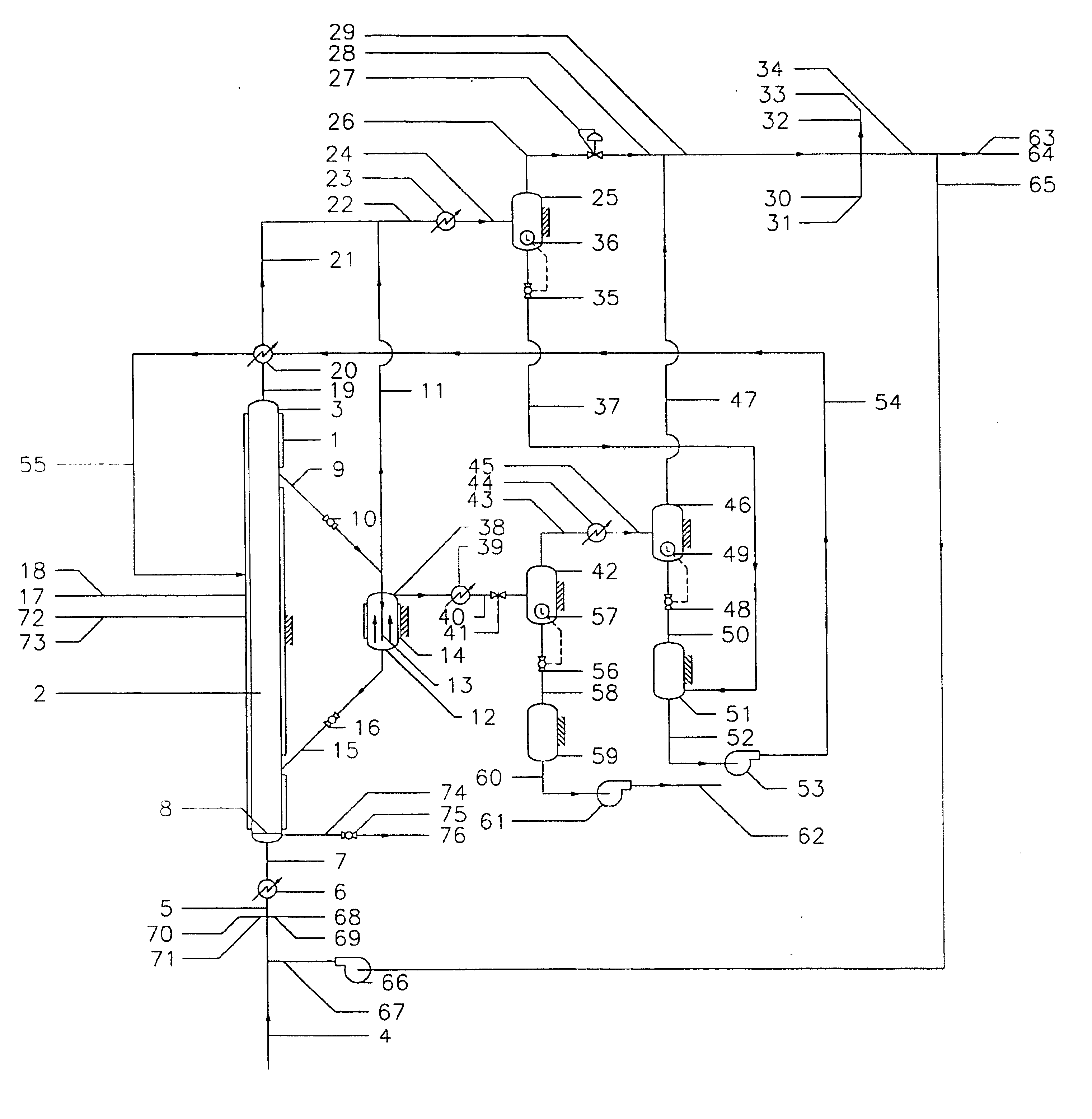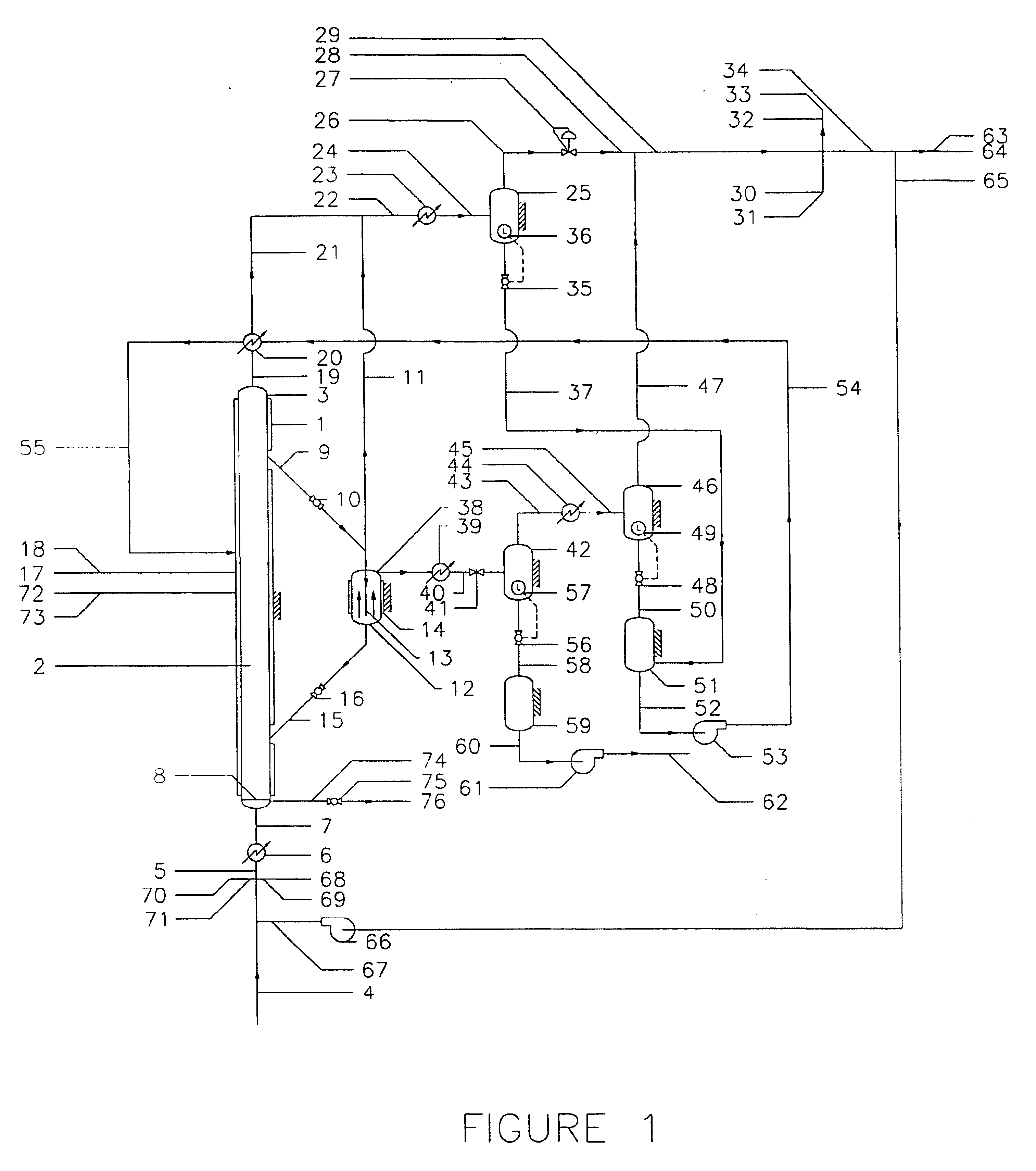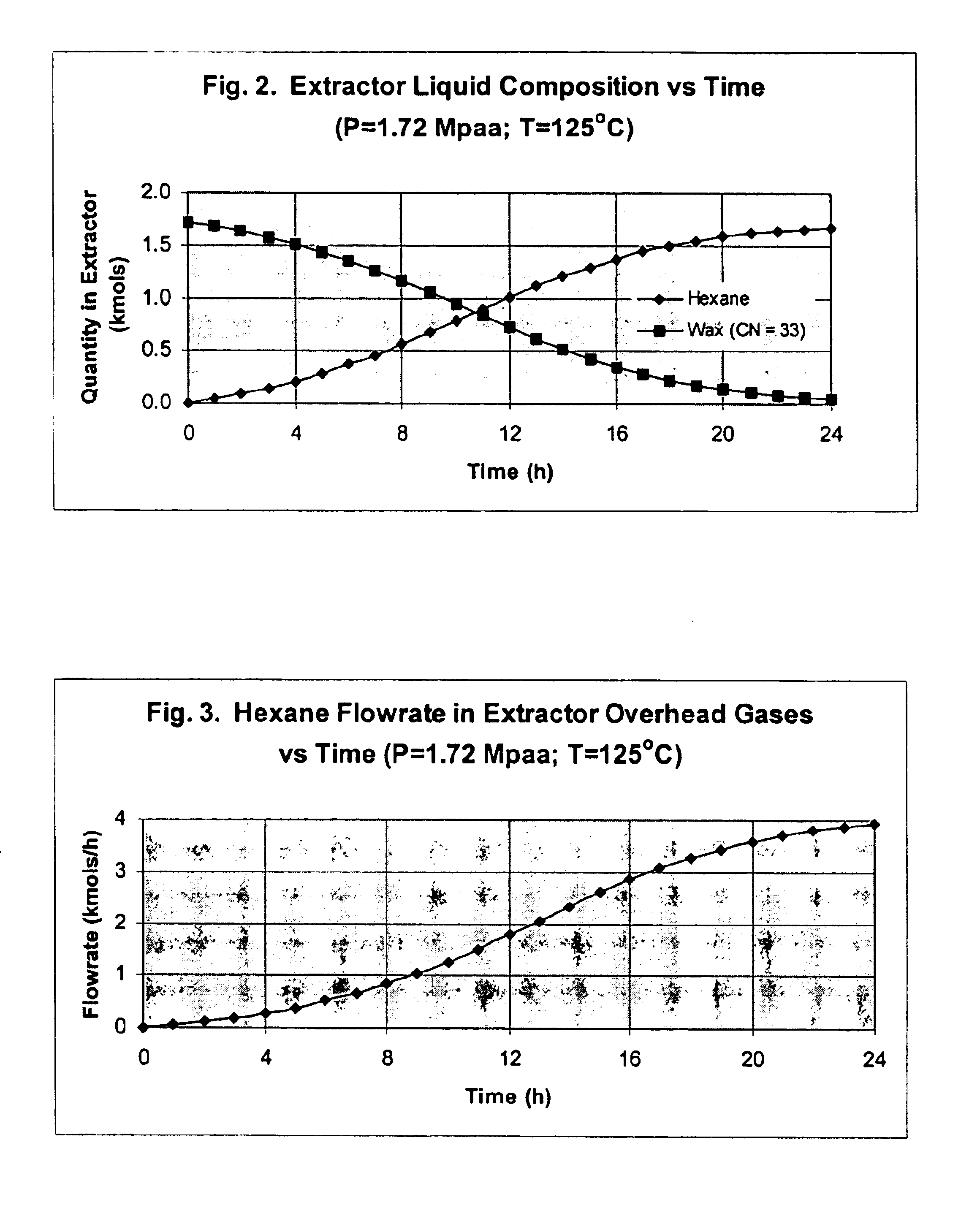Method and apparatus for regenerating an iron-based Fischer-Tropsch catalyst
a technology of iron-based fischer-tropsch catalyst and method, which is applied in the direction of vacuum distillation separation, separation process, other chemical processes, etc., can solve the problems of increasing catalyst cost, inhibiting the activity of catalyst, and procedures described in these patents, and not providing wax- and contaminant-free catalysts
- Summary
- Abstract
- Description
- Claims
- Application Information
AI Technical Summary
Benefits of technology
Problems solved by technology
Method used
Image
Examples
example 1
is presented herein to show one embodiment of the invention and should not be construed as a limitation of the invention. Different gases, solvents, pressures and temperatures can be chosen by one skilled in the art to optimize the different steps of the invention. Solvents other than hexane such as hexene, heptane, heptene, tetrahydrofuran and Fischer-Tropsch naphtha can be used. Also, the novel method of wax extraction described herein can be applied to any wax-laden Fischer-Tropsch catalyst, including cobalt and ruthenium.
PUM
| Property | Measurement | Unit |
|---|---|---|
| Temperature | aaaaa | aaaaa |
| Temperature | aaaaa | aaaaa |
| Temperature | aaaaa | aaaaa |
Abstract
Description
Claims
Application Information
 Login to View More
Login to View More - R&D
- Intellectual Property
- Life Sciences
- Materials
- Tech Scout
- Unparalleled Data Quality
- Higher Quality Content
- 60% Fewer Hallucinations
Browse by: Latest US Patents, China's latest patents, Technical Efficacy Thesaurus, Application Domain, Technology Topic, Popular Technical Reports.
© 2025 PatSnap. All rights reserved.Legal|Privacy policy|Modern Slavery Act Transparency Statement|Sitemap|About US| Contact US: help@patsnap.com



